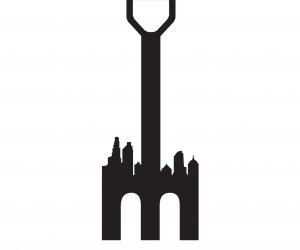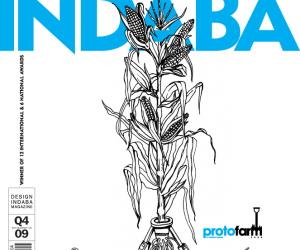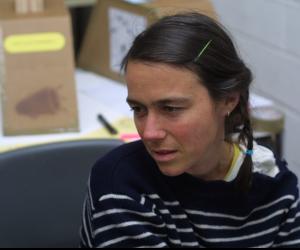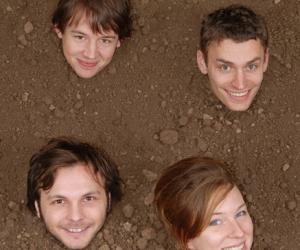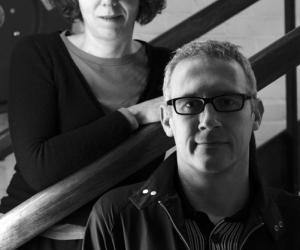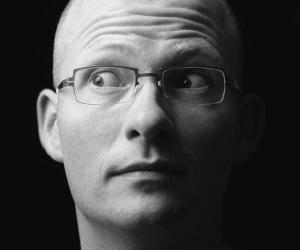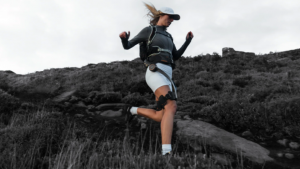Part of the Project
First Published in
Farming is the primary source of the world’s food supply and, as a harnessed natural system, one of the few renewable production systems. Historically, farming and agriculture have been key in the rise of civilisation; the domestication of animals and plants have given people more free time for “higher” pursuits. However, as the cracks start to show, farming itself might need to be repositioned as the highest pursuit.
In 2009, 850 million of the world’s 6-billion still go hungry in a world that arguably produces enough food to feed everyone. Further, agriculture is responsible for 40% of human-made greenhouse gas emissions, half of which is from livestock farming – including the oil-grown grainfeed and methane flatulence. In fact, more calories of fossil fuel are used in industrialised farming than calories of food produced, while deforestation, tillage and overgrazing also release carbon from living and recently-living plants and organic matter. In terms of travel miles, the farm to fork distance has gone global, as consumers have come to expect exotic and out-of-season produce daily.
Large-scale corporate-owned industrialised farming has also caused concentrations of power at various points in the food chain, rendering the individual quite helpless. Although “political” food purchases are gaining traction the world over, the individual does not have the power to enable this shift. Politics govern farming and food accessibility more than commerce. For instance, it is predicted that it is better to build roads in Africa and access untapped agricultural land and rural farmers, than continue deforesting the already agriculture-intensive regions of India, Brazil and Mexico.
Over the next 40 years, a more environmentally friendly and efficient way to feed people must be developed to meet the needs of the 2050 world population, estimated to be 9.2-billion. Rising economies such as China and India will continue to place higher demands on lifestyle food choices such as meat and dairy, while the production of biofuels could reduce the amount of agricultural land dedicated to food. Climate changes also threaten to redistribute fertile and arid land, as well as put stress on the supply of fresh water.
Yet, by reviewing the notion of farming as primarily for food and sustenance, and adding environmental and energy resources into the equation, farming can form the basis of a sustainable globe. Instead of large-scale carbon emitting farms, small and medium-sized farms can be designed as self-sufficient, off-the-grid ecosystems. With organic methods, biochar activities and other farming techniques deployed, farms could in fact become carbon sinks rather than emitters. For instance, returning to the practice of feeding livestock on grass, reduces the methane output and allows for the manure to be used as fertiliser. More distributed and integrated farms would also increase food accessibility, while intra-urban farming areas would reduce food miles and offset urban environmental issues such as heat islands.
Covering this highly topical pasture of food, energy and resource security, Protofarm 2050 features five designers looking beyond the possibilities and predictions currently in the public domain. Based on a 2050 of increased urbanisation and population, limited natural resources, climate challenges and digital-biological integration, these unique design scenarios envision the sustainable cultivation of renewable resources.
Multinational Feedback Loop
Futurefarmers
“Grow edible microscopic organisms in lakes. Every lake will become a kettle of readymade soup that only needs to be heated. Contented people will lie about on the shores, swimming and having dinner. The food of the future.” – Velimir Khlebnikov, Proposals, 1915
Futurefarmers, like Don Quixote, propose to draw strength from the weaknesses that may be bestowed upon us in the future. These weaknesses are already here and more are drawing near. However, where there are obsessive amounts of waste, decay and destruction, Futurefarmers finds refuge. These are the new frontiers; though familiar and banal, they contain the seeds of future sustenance, future life.
As such, Futurefarmers looked at the history of thought and flight into new realms, within and outside of ourselves. What ships can make this voyage? We have made projections of space colonies like the Stanford Torus in 1975 and the Bernal Sphere in 1929 – rich experiments in imagining the future in a time of optimism. Neither of these exist, but where did those projections take us?
Multinational Feedback Loop proposes taking these ships that never flew and merging them with retired ships (both literal and metaphorical) as spaces replete with life. The present surrounds us with the endpoints of the industrial age – experiments, empires, mechanisms and ways of thinking that are retiring after long service. Like the never built space stations, they have served their first purpose and now inspire a new use.
Items deemed obsolete will be reassembled, merged, relocated and given a second life. Dried-up oil fields will be bio-remediated. Retired aircraft will become propagation houses for seedlings. Abandoned ships will be moved from Chittagong to Singapore, to be re-inhabited or even sunk to become home to oysters and foundations for underwater life.
Futurefarmers is a group of practitioners in San Francisco who are aligned through an open practice of making work that is relevant to the time and space surrounding us. Amy Franceschini and Noah Murphy-Reinhertz collaborated on Multinational Feedback Loop.
Guide to Free Farming
5.5 designers
Farming was born from the will to subsist by exploiting our countryside. However, in 2050 more than 80% of the world population will live in cities, meaning that our relationship with nature will stop evolving. The more time that goes by, the more distant we will be from our natural environment.
Already, in less than 50 years, our relationship with food in our urban world has changed a lot. There is no longer a culture of having one’s own vegetable garden or cutting up a rabbit. Our way of life has changed and we don’t have the time anymore to collect eggs from the chicken coop every morning. All those gestures, which were part of the routine of our grandparents, will probably be lost for the majority of the population. Furthermore, supermarkets influence all our products, most of which are calibrated, pasteurised, controlled, selected, tagged, over packaged… All breaks in the chain that links us with the natural origins of products.
The Guide to Free Farming project tries to restore a close relation between consumers and the natural environment, creating a shorter link, without buffers, where people take on the role of farmer in their new city environment. It is about “farming” the city as an ecosystem itself and the pages will guide readers to discover the unsuspecting resources hidden in our towns.
It will include recipes like street flower salad and grilled rat, along with instruction guides to, for instance, pluck a pigeon or a starling just as we once plucked chickens. Tips for collecting dandelion greens, snails and honey, as well guides to mushroom picking and uses for expired food will also be included. The good address section will provide schedules for traditional weekly gleaning sessions at the back of our best supermarkets.
The Guide to Free Farming will be an indispensible handbook for urban living in 2050.
The 5.5 designers from Paris are Vincent Baranger, Jean-Sébastien Blanc, Anthony Lebossé and Claire Renard, who together aspire to achieving conceptual rigour, while permanently questioning their status as designer.
Designs for an Over-Populated Planet: No.1 Foragers
Dunne&Raby
The world is running out of food – we need to produce 70% more food in the next 40 years according to the UN. Yet we continue to over-populate the planet, use up resources and ignore all the warning signs. It is completely unsustainable.
In Designs for an Over-populated Planet: No. 1 Foragers, Dunne&Raby look at evolutionary processes and molecular technologies, and how we can take control. The assumption is that governments and industry together will not solve the problem, and that groups of people will need to use available knowledge to build their own solutions, bottom-up.
So far we have not really embraced the power to modify ourselves. What if we could extract nutritional value from non-human foods using a combination of synthetic biology and new digestive devices inspired by the digestive systems of other mammals, birds, fish and insects?
As such, a group of people take their fate into their own hands and start building DIY devices. They use synthetic biology to create “microbial stomach bacteria”, along with electronic and mechanical devices, to maximise the nutritional value of the urban environment, making-up for any shortcomings in the commercially available but increasingly limited diet. These people are the new urban foragers.
The second group, amateur horticulturists, develop new, more digestible plants in their homes, building on the traditions of competition marrow breeders etc. Using synthetic biology technologies they develop DIY solutions and reject the pressures of dominant survivalist strategies and the blanket use of algae. They are aesthetes and want to expand on evolution, pushing the possibilities of plant matter to the limits. They still want flowers, but if they were edible, perhaps they would be more acceptable.
Yet a third wave of enthusiasts takes digestion to its limits. Every single item that enters the home will eventually, at the end of its use, be digested in multiple, very specific, domestic digestive machines. In the end it all becomes about digestive systems. Enhancing them, augmenting them, making new ones, and redesigning nature to suit them.
The project is about the contrast between bottom-up and top-down responses to a massive problem and the role played by technical and scientific knowledge. It builds on existing cultures currently working on the edges of society, who may initially appear extreme and specialist – guerrilla gardeners, garage biologists etc. By adapting and expanding these strategies, they become models to speculate on what might happen in the future.
Based in London, Dunne&Raby – Anthony Dunne and Fiona Raby – use design as a medium to stimulate debate among designers, industry and the public about the social, cultural and ethical implications of existing and emerging technologies.
Electrocyte Appendix
Revital Cohen
The Electrocyte Appendix is an artificial organ that could be implanted into the body in order to enable people to become electric organisms. Inspired by the electric eel and the way it uses electrocyte cells to produce electrical current from its abdomens, the organ is constructed out of artificial cells that mimic and improve the electrocyte mechanism by converting blood sugar into electricity.
Replacing the vestigial appendix, the artificial organ brings a new functionality to human anatomy – the ability to farm and produce electricity directly from the body. By discarding the remains of redundant anatomical functions in favour of new abilities, the body is redesigned in order to sustain its new way of living.
Biotechnology could allow us to transform our genus into something else. The idea of our species changing from Homo Sapiens into Homo Evolutis (the human as a species controlling and designing its own evolution) is materialising quickly in research labs. What kind of genus can be constructed when the Homo starts taking after the Gymnotus (electric fish)? Forecasts for 2050 point towards technologically-assisted reclusiveness, self-sufficiency and social isolation. These behaviours are enabled by communication networks that allow one to survive without leaving the home or having physical interactions with others. In this kind of existence, where electricity becomes vital for survival, should the body adapt to behaviour and adjust to sustain it?
Humans are by nature social animals, but by retracting into self-sustaining solitude, a person becomes similar to the electric eel in behaviour. The eel is a solitary animal that lives alone, hunting and breeding without any interaction with other organisms, sensing and reacting to the presence of others through electric charges. As we start behaving this way, should our bodies evolve to provide us with electric energy? In this future scenario the body changes its function. Instead of an organism designed to attract, socialise, mate and reproduce with others, the human body becomes an electricity-generating vessel. Nurtured and harvested by its owner, it is designed to sustain a new form of virtual existence for an individual who lives through electronic networks.
The feasibility of the project is based on “Designing Artificial Cells to Harness the Biological Ion Concentration Gradient” by Jian Xu and David LaVan, Nature Nanotechnology, 21 September 2008.
Revital Cohen is a London-based designer and researcher who develops critical objects and provocative scenarios exploring the juxtaposition of the natural with the artificial.
Oogst
Frank Tjepkema
Frank Tjepkema’s studio, Tjep, began investigating new developments in agriculture in 2008 and came across a number of radical ideas about self-sufficiency that could lead to a more sustainable society. Oogst, the resulting project, chose to accentuate the cultural aspects and social implications of the available technologies.
As a creative agency focusing on 3D design and visual communication, questions were asked about how we as designers can contribute to the fundamental developments that are taking place in Dutch agricultural research. Also, is self-sufficiency the path towards a more ecological sustainable society? And, if so, on what scale is it workable? Can the advantages of a globalised world be combined with aspirations towards physical independence?
After preliminary encounters with engineers from the University of Agriculture in Wageningen and the Innovation Network in Utrecht, Tjep’s attention was drawn to the Agro Park and the Greenhouse Village projects. Both are about creating synergy between production processes in agriculture as well as considering energy consumption and waste production in the residential sector. Mimicking the idea of an ecosystem, the Greenhouse Village is self-sufficient in energy and water, and recycles nutrients and carbon.
From the perspective of a design agency, these developments were not linked to a satisfactory form or image. Despite the radical social and economic implications, when it comes to design, as often happens in the early stages of a technical breakthrough, finding satisfactory new typologies for the proposed technology always seems to lag behind. We also tend to stick to a nostalgic image of what the essence of a traditional farm should be like and look like – hardly surprising as agriculture is one of the most basic and fundamental human activities.
Oogst offers three proposals for farm designs. Each proposal uses the production scale as a basis for the design – Oogst 1 for one person, Oogst 100 for a 100-person community and Oogst 1 000 Wonderland as a self-sufficient farm, restaurant, hotel and amusement park for 1 000 people per day. Although the project is foreseeable in terms of technology and production volumes, economic aspects were not taken into account in this experimental phase.
Frank Tjepkema’s Tjep design studio consists of a small team of highly motivated designers based in Amsterdam. Aiming to challenge conventional views, every project at Tjep starts with a “Why?”
Farming is the primary source of the world’s food supply and, as a harnessed natural system, one of the few renewable production systems. Historically, farming and agriculture have been key in the rise of civilisation; the domestication of animals and plants have given people more free time for “higher” pursuits. However, as the cracks start to show, farming itself might need to be repositioned as the highest pursuit.
In 2009, 850 million of the world’s 6-billion still go hungry in a world that arguably produces enough food to feed everyone. Further, agriculture is responsible for 40% of human-made greenhouse gas emissions, half of which is from livestock farming – including the oil-grown grainfeed and methane flatulence. In fact, more calories of fossil fuel are used in industrialised farming than calories of food produced, while deforestation, tillage and overgrazing also release carbon from living and recently-living plants and organic matter. In terms of travel miles, the farm to fork distance has gone global, as consumers have come to expect exotic and out-of-season produce daily.
Large-scale corporate-owned industrialised farming has also caused concentrations of power at various points in the food chain, rendering the individual quite helpless. Although “political” food purchases are gaining traction the world over, the individual does not have the power to enable this shift. Politics govern farming and food accessibility more than commerce. For instance, it is predicted that it is better to build roads in Africa and access untapped agricultural land and rural farmers, than continue deforesting the already agriculture-intensive regions of India, Brazil and Mexico.
Over the next 40 years, a more environmentally friendly and efficient way to feed people must be developed to meet the needs of the 2050 world population, estimated to be 9.2-million. Rising economies such as China and India will continue to place higher demands on lifestyle food choices such as meat and dairy, while the production of biofuels could reduce the amount of agricultural land dedicated to food. Climate changes also threaten to redistribute fertile and arid land, as well as put stress on the supply of fresh water.
Yet, by reviewing the notion of farming as primarily for food and sustenance, and adding environmental and energy resources into the equation, farming can form the basis of a sustainable globe. Instead of large-scale carbon emitting farms, small and medium-sized farms can be designed as self-sufficient, off-the-grid ecosystems. With organic methods, biochar activities and other farming techniques deployed, farms could in fact become carbon sinks rather than emitters. For instance, returning to the practice of feeding livestock on grass, reduces the methane output and allows for the manure to be used as fertiliser. More distributed and integrated farms would also increase food accessibility, while intra-urban farming areas would reduce food miles and offset urban environmental issues such as heat islands.
Covering this highly topical pasture of food, energy and resource security, Protofarm 2050 features five designers looking beyond the possibilities and predictions currently in the public domain. Based on a 2050 of increased urbanisation and population, limited natural resources, climate challenges and digital-biological integration, these unique design scenarios envision the sustainable cultivation of renewable resources.
Multinational Feedback Loop
Futurefarmers
“Grow edible microscopic organisms in lakes. Every lake will become a kettle of readymade soup that only needs to be heated. Contented people will lie about on the shores, swimming and having dinner. The food of the future.” – Velimir Khlebnikov, Proposals, 1915
Futurefarmers, like Don Quixote, propose to draw strength from the weaknesses that may be bestowed upon us in the future. These weaknesses are already here and more are drawing near. However, where there are obsessive amounts of waste, decay and destruction, Futurefarmers finds refuge. These are the new frontiers; though familiar and banal, they contain the seeds of future sustenance, future life.
As such, Futurefarmers looked at the history of thought and flight into new realms, within and outside of ourselves. What ships can make this voyage? We have made projections of space colonies like the Stanford Torus in 1975 and the Bernal Sphere in 1929 – rich experiments in imagining the future in a time of optimism. Neither of these exist, but where did those projections take us?
Multinational Feedback Loop proposes taking these ships that never flew and merging them with retired ships (both literal and metaphorical) as spaces replete with life. The present surrounds us with the endpoints of the industrial age – experiments, empires, mechanisms and ways of thinking that are retiring after long service. Like the never built space stations, they have served their first purpose and now inspire a new use.
Items deemed obsolete will be reassembled, merged, relocated and given a second life. Dried-up oil fields will be bio-remediated. Retired aircraft will become propagation houses for seedlings. Abandoned ships will be moved from Chittagong to Singapore, to be re-inhabited or even sunk to become home to oysters and foundations for underwater life.
Futurefarmers is a group of practitioners in San Francisco who are aligned through an open practice of making work that is relevant to the time and space surrounding us. Amy Franceschini and Noah Murphy-Reinhertz collaborated on Multinational Feedback Loop.
Guide to Free Farming
5.5 designers
Farming was born from the will to subsist by exploiting our countryside. However, in 2050 more than 80% of the world population will live in cities, meaning that our relationship with nature will stop evolving. The more time that goes by, the more distant we will be from our natural environment.
Already, in less than 50 years, our relationship with food in our urban world has changed a lot. There is no longer a culture of having one’s own vegetable garden or cutting up a rabbit. Our way of life has changed and we don’t have the time anymore to collect eggs from the chicken coop every morning. All those gestures, which were part of the routine of our grandparents, will probably be lost for the majority of the population. Furthermore, supermarkets influence all our products, most of which are calibrated, pasteurised, controlled, selected, tagged, over packaged… All breaks in the chain that links us with the natural origins of products.
The Guide to Free Farming project tries to restore a close relation between consumers and the natural environment, creating a shorter link, without buffers, where people take on the role of farmer in their new city environment. It is about “farming” the city as an ecosystem itself and the pages will guide readers to discover the unsuspecting resources hidden in our towns.
It will include recipes like street flower salad and grilled rat, along with instruction guides to, for instance, pluck a pigeon or a starling just as we once plucked chickens. Tips for collecting dandelion greens, snails and honey, as well guides to mushroom picking and uses for expired food will also be included. The good address section will provide schedules for traditional weekly gleaning sessions at the back of our best supermarkets.
The Guide to Free Farming will be an indispensible handbook for urban living in 2050.
The 5.5 designers from Paris are Vincent Baranger, Jean-Sébastien Blanc, Anthony Lebossé and Claire Renard, who together aspire to achieving conceptual rigour, while permanently questioning their status as designer.
Designs for an Over-Populated Planet: No.1 Foragers
Dunne&Raby
The world is running out of food – we need to produce 70% more food in the next 40 years according to the UN. Yet we continue to over-populate the planet, use up resources and ignore all the warning signs. It is completely unsustainable.
In Designs for an Over-populated Planet: No. 1 Foragers, Dunne&Raby look at evolutionary processes and molecular technologies, and how we can take control. The assumption is that governments and industry together will not solve the problem, and that groups of people will need to use available knowledge to build their own solutions, bottom-up.
So far we have not really embraced the power to modify ourselves. What if we could extract nutritional value from non-human foods using a combination of synthetic biology and new digestive devices inspired by the digestive systems of other mammals, birds, fish and insects?
As such, a group of people take their fate into their own hands and start building DIY devices. They use synthetic biology to create “microbial stomach bacteria”, along with electronic and mechanical devices, to maximise the nutritional value of the urban environment, making-up for any shortcomings in the commercially available but increasingly limited diet. These people are the new urban foragers.
The second group, amateur horticulturists, develop new, more digestible plants in their homes, building on the traditions of competition marrow breeders etc. Using synthetic biology technologies they develop DIY solutions and reject the pressures of dominant survivalist strategies and the blanket use of algae. They are aesthetes and want to expand on evolution, pushing the possibilities of plant matter to the limits. They still want flowers, but if they were edible, perhaps they would be more acceptable.
Yet a third wave of enthusiasts takes digestion to its limits. Every single item that enters the home will eventually, at the end of its use, be digested in multiple, very specific, domestic digestive machines. In the end it all becomes about digestive systems. Enhancing them, augmenting them, making new ones, and redesigning nature to suit them.
The project is about the contrast between bottom-up and top-down responses to a massive problem and the role played by technical and scientific knowledge. It builds on existing cultures currently working on the edges of society, who may initially appear extreme and specialist – guerrilla gardeners, garage biologists etc. By adapting and expanding these strategies, they become models to speculate on what might happen in the future.
Based in London, Dunne&Raby – Anthony Dunne and Fiona Raby – use design as a medium to stimulate debate among designers, industry and the public about the social, cultural and ethical implications of existing and emerging technologies.
Electrocyte Appendix
Revital Cohen
The Electrocyte Appendix is an artificial organ that could be implanted into the body in order to enable people to become electric organisms. Inspired by the electric eel and the way it uses electrocyte cells to produce electrical current from its abdomens, the organ is constructed out of artificial cells that mimic and improve the electrocyte mechanism by converting blood sugar into electricity.
Replacing the vestigial appendix, the artificial organ brings a new functionality to human anatomy – the ability to farm and produce electricity directly from the body. By discarding the remains of redundant anatomical functions in favour of new abilities, the body is redesigned in order to sustain its new way of living.
Biotechnology could allow us to transform our genus into something else. The idea of our species changing from Homo Sapiens into Homo Evolutis (the human as a species controlling and designing its own evolution) is materialising quickly in research labs. What kind of genus can be constructed when the Homo starts taking after the Gymnotus (electric fish)? Forecasts for 2050 point towards technologically-assisted reclusiveness, self-sufficiency and social isolation. These behaviours are enabled by communication networks that allow one to survive without leaving the home or having physical interactions with others. In this kind of existence, where electricity becomes vital for survival, should the body adapt to behaviour and adjust to sustain it?
Humans are by nature social animals, but by retracting into self-sustaining solitude, a person becomes similar to the electric eel in behaviour. The eel is a solitary animal that lives alone, hunting and breeding without any interaction with other organisms, sensing and reacting to the presence of others through electric charges. As we start behaving this way, should our bodies evolve to provide us with electric energy? In this future scenario the body changes its function. Instead of an organism designed to attract, socialise, mate and reproduce with others, the human body becomes an electricity-generating vessel. Nurtured and harvested by its owner, it is designed to sustain a new form of virtual existence for an individual who lives through electronic networks.
The feasibility of the project is based on “Designing Artificial Cells to Harness the Biological Ion Concentration Gradient” by Jian Xu and David LaVan, Nature Nanotechnology, 21 September 2008.
Revital Cohen is a London-based designer and researcher who develops critical objects and provocative scenarios exploring the juxtaposition of the natural with the artificial.
Oogst
Frank Tjepkema
Frank Tjepkema’s studio, Tjep, began investigating new developments in agriculture in 2008 and came across a number of radical ideas about self-sufficiency that could lead to a more sustainable society. Oogst, the resulting project, chose to accentuate the cultural aspects and social implications of the available technologies.
As a creative agency focusing on 3D design and visual communication, questions were asked about how we as designers can contribute to the fundamental developments that are taking place in Dutch agricultural research. Also, is self-sufficiency the path towards a more ecological sustainable society? And, if so, on what scale is it workable? Can the advantages of a globalised world be combined with aspirations towards physical independence?
After preliminary encounters with engineers from the University of Agriculture in Wageningen and the Innovation Network in Utrecht, Tjep’s attention was drawn to the Agro Park and the Greenhouse Village projects. Both are about creating synergy between production processes in agriculture as well as considering energy consumption and waste production in the residential sector. Mimicking the idea of an ecosystem, the Greenhouse Village is self-sufficient in energy and water, and recycles nutrients and carbon.
From the perspective of a design agency, these developments were not linked to a satisfactory form or image. Despite the radical social and economic implications, when it comes to design, as often happens in the early stages of a technical breakthrough, finding satisfactory new typologies for the proposed technology always seems to lag behind. We also tend to stick to a nostalgic image of what the essence of a traditional farm should be like and look like – hardly surprising as agriculture is one of the most basic and fundamental human activities.
Oogst offers three proposals for farm designs. Each proposal uses the production scale as a basis for the design – Oogst 1 for one person, Oogst 100 for a 100-person community and Oogst 1 000 Wonderland as a self-sufficient farm, restaurant, hotel and amusement park for 1 000 people per day. Although the project is foreseeable in terms of technology and production volumes, economic aspects were not taken into account in this experimental phase.
Frank Tjepkema’s Tjep design studio consists of a small team of highly motivated designers based in Amsterdam. Aiming to challenge conventional views, every project at Tjep starts with a “Why?”
















